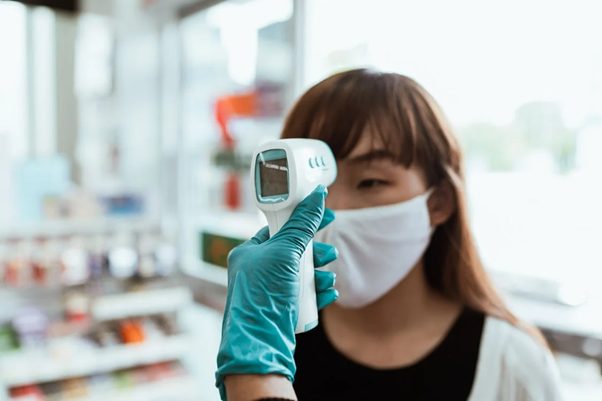Malpractice is always a risk, especially when using tech so how can health providers avoid malpractice?
Malpractice claims South Wales are a critical concern for healthcare providers leveraging technology to enhance patient care. In today’s fast-evolving medical landscape, the integration of health tech introduces incredible opportunities but also heightens the importance of vigilance in maintaining ethical and legal standards.
With this in mind, we’ll explore 10 ways that healthcare providers utilise health tech and how to avoid malpractice in the midst of usage…
1. Stay Compliant with Legal and Ethical Standards
In South Wales, following rules and ethics in healthcare is vital. It’s not just a guideline—it’s a form of protection against malpractice claims. Sticking to these norms is crucial to keeping patients safe and safeguarding healthcare providers from legal issues.
Especially here, where such claims carry weight, strict adherence to these norms is a must. Not following these standards not only risks patient safety but also puts healthcare professionals at legal risk, affecting the care quality.
2. Collaborate with IT and Health Tech Experts
Working with tech experts is crucial when integrating health tech. They bring vital know-how to blend technology seamlessly into healthcare. It’s more than just advice; it’s a partnership ensuring tech is used effectively, lowering the chances of malpractice claims.
Their guidance helps align technology with what’s needed clinically, reducing errors and boosting healthcare’s effectiveness.
3. Conduct Regular Audits and Quality Assurance Checks
Regular audits and quality checks act as preventive measures against malpractice risks. These routine examinations delve deep into the technological systems, diligently identifying any gaps or issues that might otherwise slip by unnoticed.
By conducting these ongoing check-ups, healthcare teams swiftly address and rectify potential weaknesses. This continual monitoring and improvement fortify the system’s resilience against malpractice risks, ensuring a safer and more reliable healthcare environment.

Image | Pexels.com
4. Ensure Proper Documentation and Communication
Clear and comprehensive documentation, coupled with open and effective communication among healthcare teams, forms the bedrock of secure patient care. Accurate records and transparent conversations serve as safeguards against misunderstandings that could potentially lead to malpractice claims.
Proper documentation not only enhances patient care but also significantly reduces the risk of errors stemming from misinterpretations or lack of information among healthcare professionals.
5. Implement Clinical Decision Support Systems (CDSS)
The integration of clinical decision support systems marks a significant shift in healthcare efficiency. These systems play a pivotal role in guiding healthcare professionals toward making informed decisions in a timely manner.
By offering valuable insights, alerts, and suggestions derived from patient data, CDSS assists healthcare providers in navigating complex decision-making processes. This proactive assistance drastically lowers the risk of errors and oversights, substantially reducing the probability of malpractice occurrences.
6. Foster a Culture of Continuous Improvement
Encouraging an environment that values ongoing growth and learning is pivotal in mitigating malpractice risks. This culture places emphasis on learning from past experiences and embracing constructive feedback.
It serves as a catalyst for optimal utilisation of health tech, effectively minimising risks and elevating the standard of patient care.
7. Conduct Regular Training for Healthcare Staff
Continuous training sessions for healthcare staff serve as a cornerstone in risk reduction. These sessions not only enhance technical skills but also reinforce ethical practices among healthcare professionals.
By keeping the workforce updated on technological advancements, these training programs significantly enhance the safety and reliability of patient care, reducing vulnerability to potential risks.
8. Embrace Telehealth Best Practices
The evolution of telehealth is reshaping healthcare delivery. Embracing best practices in telehealth is instrumental in steering clear of malpractice pitfalls. Adherence to these practices, including stringent privacy protocols and proficient utilisation of technology, substantially minimises the risks associated with remote care delivery.
9. Implement Robust Health Information Systems (HIS)
A robust health information system is fundamental in efficient healthcare management. Such systems not only adeptly manage data but also ensure the security and accuracy of patient information.
By minimising errors and fortifying data security, a robust HIS significantly diminishes the potential for issues that could lead to malpractice claims.
10. Stay Informed on the Latest Health Tech Developments
Staying abreast of emerging health tech is imperative for healthcare professionals. Remaining informed equips them to proactively tackle new challenges, substantially lowering the likelihood of malpractice claims by adapting swiftly to innovative solutions.
Healthcare tech practices to shield against malpractice…
In wrapping up, weaving these top tips into healthcare tech practices becomes a sturdy shield against malpractice claims in South Wales. Embracing a full-circle approach that melds tech innovation with ethical and legal adherence stands as the cornerstone for delivering top-quality patient care.





